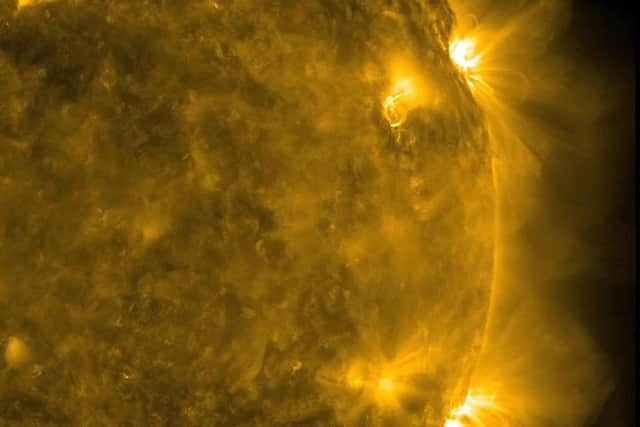What is a solar flare? Solar Storm expected to hit Earth soon, experts warn of GPS and radio blackouts
According to NASA’s predictions, a solar storm is likely to hit Earth as early as today if not tomorrow (July 20).
The solar storm potentially could interfere with radios and global positioning systems.
Advertisement
Hide AdAdvertisement
Hide AdWhat is a solar flare?


A solar flare is an “intense burst of radiation coming from the release of magnetic energy associated with sunspots,” according to NASA.
They can cause magnetic disturbances on Earth that disrupt short-wave radio communications, affecting technology like satellites.
When is the solar flare expected to hit Earth?
NASA predicted the storm will impact Earth on July 19.
US-based space weather physicist, Dr Tamitha Skov, wrote that we should expect a “direct hit” from a “snake-like filament” (solar flare) emitted from the sun.
This solar flare released a Coronal Mass Ejection (CME) that will strike Earth in the form of a solar storm.
The storm which has been classed as G1 (minor) may not hit Earth until later this week, according to the Space Weather website.
Rather, it may impact our planet on July 20 or 21.
Can this solar activity affect humans on Earth?
Dr Sebastian Voltmer, an astrophotographer who was monitoring the activity, commented that “the sheer size of the prominence is impressive.”
However, despite its size the storm itself is not expected to hurt anyone.
The harmful radiation it emits should not penetrate Earth’s atmosphere.
Advertisement
Hide AdAdvertisement
Hide AdSpace Weather described it as a “minor” geomagnetic storm, but also said it could impact satellite operations and cause blackouts or other outages across the planet.
Will the solar storm affect Earth’s climate?
Sunspots are cooler areas of the sun that can produce solar flares.
Sunspots have been observed for centuries along with their cyclical variations.
At the peak of their cycle, roughly 0.1% additional Solar energy can reach Earth, which can raise global average temperatures by 0.05-0.1℃.
This is less than the climate influence of a volcanic eruption.
As peak sunspot activity is not due until 2025, it is assumed that this solar storm will not influence Earth’s climate.
